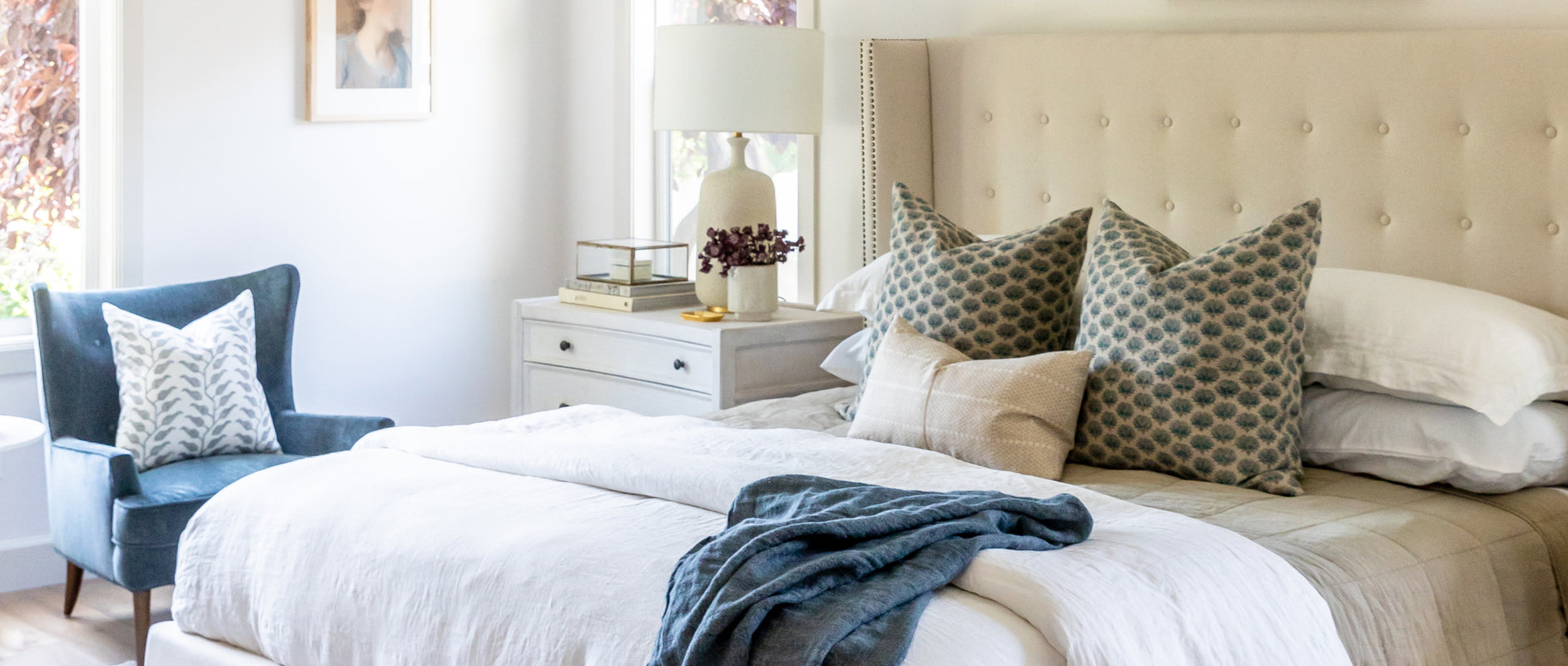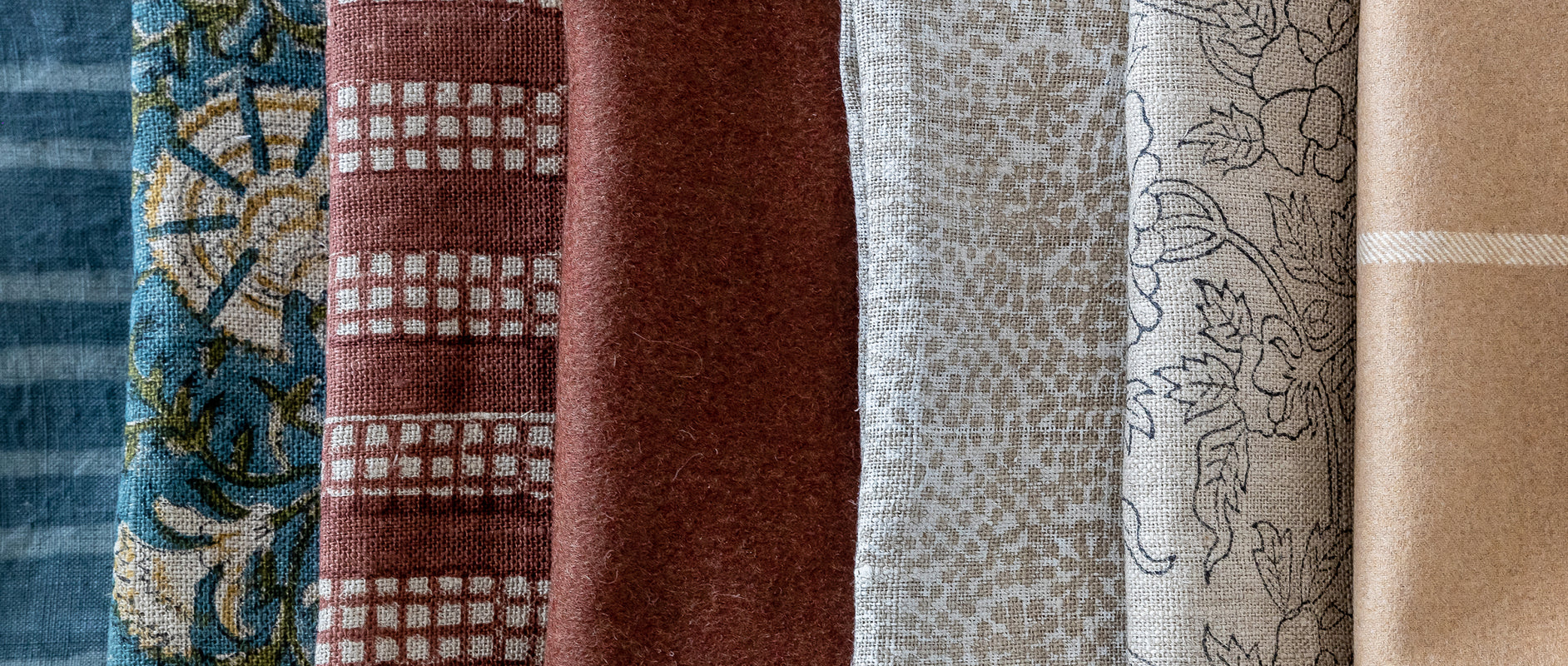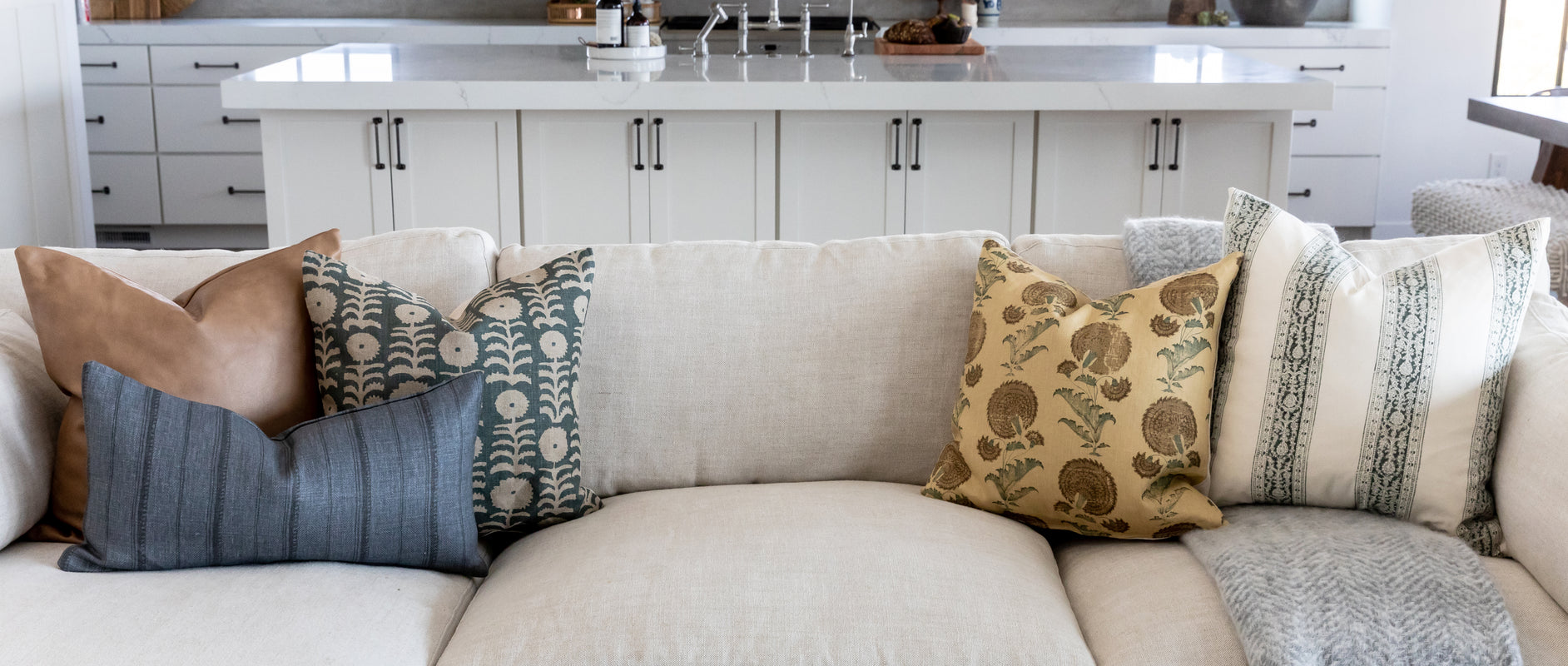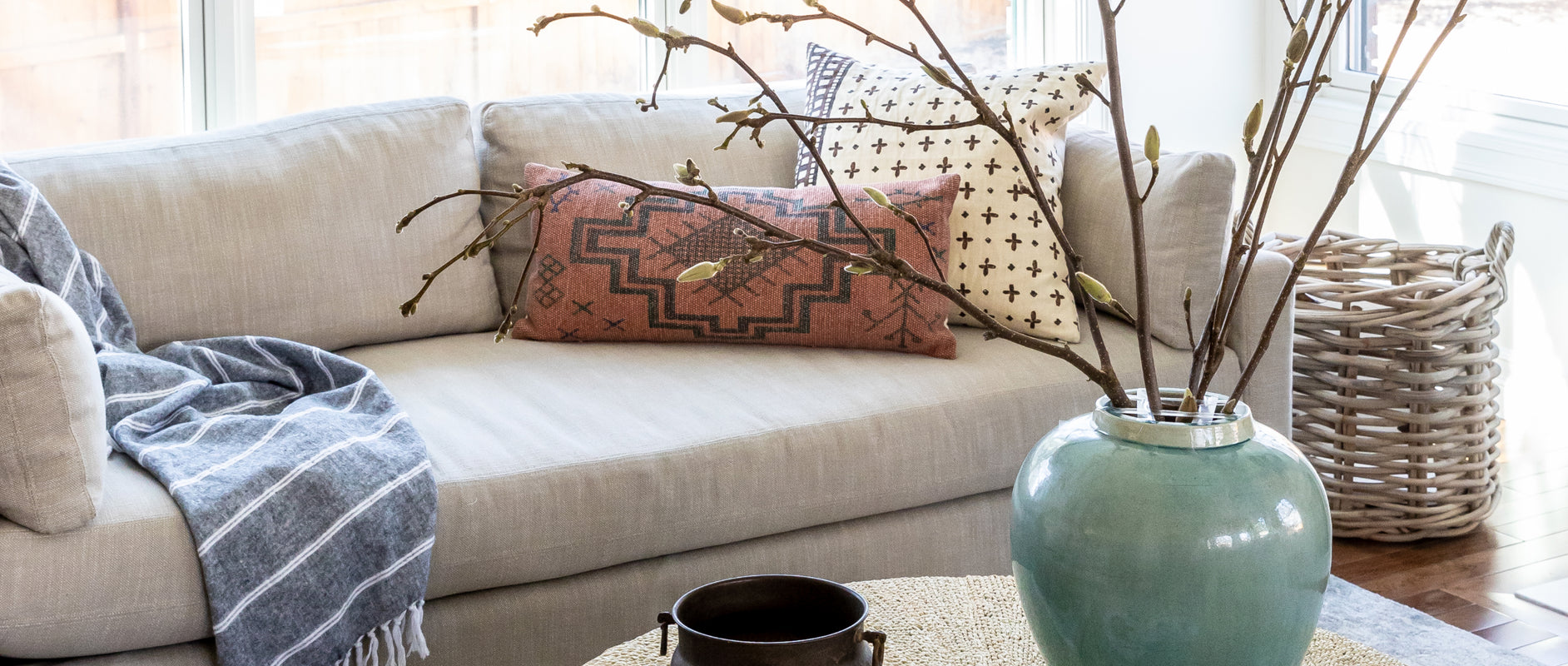the Pillow Guide
We love using pillows to add color, texture, and personality to our homes. However, it can be challenging to figure out how to choose the right inserts, coordinate different patterns and textures, and keep everything looking clean and fresh.
Here's our helpful guide to help you pick pillows like a pro!
step 01
Find Your Color Palette
Take a look around your space and see which colors catch your eye. Are there any colors that appear repeatedly in your furniture, artwork, or textiles? These colors can serve as the foundation of your palette.
step 02
Mix & Match Patterns
Start With a Neutral Base
If you're new to mixing and matching pillows, start with a neutral base. Choose solid-color pillow covers in shades of white, cream, gray, or beige. This will give you a clean canvas to build on and make it easier to add pops of color or pattern.
Mix Patterns
Mixing patterns can be intimidating, but it can also be a lot of fun. Start with a simple pattern, like stripes or plaid, and mix it with a more complex pattern, like floral or geometric. Make sure the colors in each pattern complement each other - for example, if you have a navy and white stripe, pair it with a pillow cover that has navy and white flowers.
Play with Texture
Texture can add depth and interest to a pillow arrangement. Mix smooth and shiny fabrics with rough and matte fabrics. For example, pair a velvet pillow with a linen pillow or a wool pillow with a silk pillow.
Consider Scale
When mixing patterns, it's important to consider scale. You don't want two patterns that are too similar in size or too different in size. A good rule of thumb is to pair a small-scale pattern with a large-scale pattern. For example, pair a small stripe pillow with a large floral pillow.
step 03
Choose Your Inserts
Size
Inserts are the "pillow" part of the pillow, and they come in a variety of sizes and materials. The most common insert sizes are 18x18, 20x20, and 22x22, but you can also find smaller or larger sizes depending on your needs.
For a chic, overstuffed look, we highly recommend choosing an insert that is larger than your cover by 2 inches. For example, if your cover is 22x22, your insert should be at least 24x24.
Materials
When it comes to materials, the most popular options are down and feather, polyester, or a down alternative. Down and feather inserts tend to be the softest and most comfortable, but they can be more expensive and may trigger allergies. Polyester inserts are cheaper and hypoallergenic, but they may not be as soft or moldable as down inserts. Down alternative inserts are a good middle ground - they're soft, hypoallergenic, and usually more affordable than down inserts.

step 04
Arrange Your Pillows
01. Start With the Largest Pillows
Arrange your largest pillows at the back, either in a symmetrical or asymmetrical arrangement. These can be solid or patterned, but they should be the same size.
02. Layer in Smaller Pillows
Layer in smaller pillows in front of the larger ones, either in the same pattern or a complementary pattern. Mix and match colors and textures to add interest.
03. Add a Focal Point
If you want to create a focal point, add a pillow in a bold color or pattern in the center of the arrangement.
Pillow Size Recommendations
Chairs
We Recommend:
Single Lumbar
or 20-22" Pillow
Nooks / Benches
We Recommend:
20-24" Pillows in the back
+ 20-22" Pillows in front + Lumbar
Sofas / Sectionals
We Recommend:
20-24" Pillows in corners
+ 20-22" Pillows in front + layered Lumbars
Twin Beds
We Recommend:
Single Lumbar or
20-22" Pillow + Lumbar in front
Full Beds
We Recommend:
2 x 24" Pillows + Lumbar
or 2 x 24" Pillows + 20" in front
Queen / King Beds
We Recommend:
2 x 24" Pillows + 20" Pillow next
+ Lumbar in front
step 05
Clean & Care For Your Pillows
Care instructions vary from pillow to pillow, but here's some general tips to keep in mind. For best results, always refer to the care information available for each pillow.
01. Spot Clean Stains
If you spill something on your pillow or notice a stain, don't wait to clean it. Spot clean the area with a mild detergent and warm water, being careful not to saturate the pillow.
02. Fluff Pillows Daily
Fluffing your pillows daily can help redistribute the filling and keep them looking plump and full. Simply punch or karate chop the pillow in the center to fluff it up.
03. Rotate Your Pillows
Rotating your pillows every few months can help distribute wear and tear more evenly. It can also help prevent lumps and bumps from forming in the filling. We love changing out our pillow covers each season to freshen up the space and add fun visual interest.







































